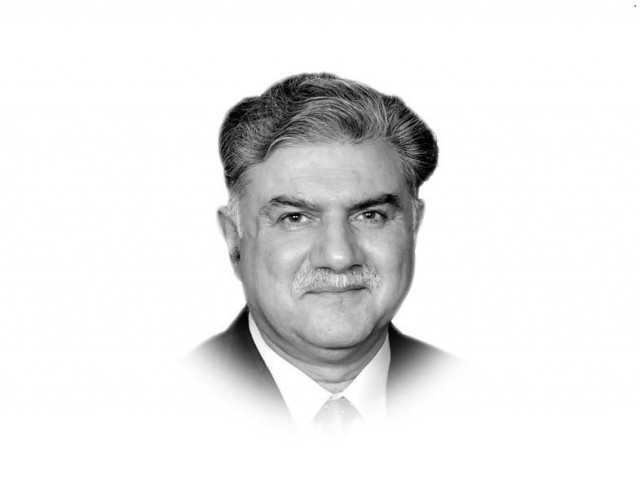Phase 2 of Russia’s Ukraine offensive — military notes
Russian offensive, contested fiercely by reinvigorated Ukrainian Army, is making slow but sure-footed progress

Ukraine’s 603,628 square kilometers (2,782 kilometers coastline) comprises two different biomes (bio-geographic areas): mixed forest towards the middle; and steppe towards the Black Sea littoral interspersed with lowlands, uplands plateaus and basins.
Mostly part of Great European Plain, Ukraine’s fertile steppes/plateaus are crossed by Dnieper, Seversky Donets, Dniester and the Southern Bug Rivers, emptying into Black Sea and the smaller Sea of Azov. Danube River delta in the southwest forms its border with Romania. Besides, Carpathian Mountains in the west and Crimean Mountains in the extreme south along the coast (of no military consequence in this war), the only formidable obstacle to military movement is the forested, riverine terrain and wetland north of Kyiv (Pripyat and Pinsk Marshes).
Once frozen in winter (up to February), this marshland makes Kyiv vulnerable to any attack from Belarus, a mere 56 kilometers north, as the frozen wetland supports military traffic. Spring thaw and the ensuing low bearing capacity due to mud, converts it into formidable obstacle that significantly hindered the Russian offensive against Kyiv. The 1,600-square-kilometer Chernobyl Zone (the site of 1986 nuclear disaster) also restricts movements along this Axis due to residual radioactivity.
Dnieper River compartmentalises any north-south military offensive into eastern and western halves. Donbas region’s military geography (pro-Moscow separatists) supports Russian military effort from the east, as Russian Army reoriented during the 2nd/current phase of their operations. Sprawling Ukrainian cities/towns pose attacker with a predicament. Mere investment (encirclement) ties down significant forces, let alone clearance that requires a 9:1 numerical superiority over the defender.
Russia’s westward advance from Donbas could be held up by Ukraine inundating ground, after blowing the massive dam on Dnieper near the southern city of Zaporizhzhya (also causing damage to its people), like Stalin did to the advancing German forces in World War II.
Black Sea and Sea of Azov in the south are Ukraine’s only sea lines of communications. Russia’s 2014 annexation of Crimea provides it expanded access to the sea. However, Russo-Ukrainian maritime trade, and Black Sea Fleet’s outside forays (supply of rotational troops in Syria through Mediterranean) depend upon Turkish goodwill. Russia did construct a 20-kilometer-long bridge over Kerch Strait (connecting Black Sea and Sea of Azov) in 2018, linking Crimea to mainland Russia, to ease up logistics.
The second phase of Russian offensive in Ukraine commenced around 19 April through an expanded “Eastern Assault” across a 300-mile frontage from Kharkov to Donetsk and Luhansk, with missile auxiliaries simultaneously targeting Kyiv and Lviv (the Western/NATO aid hub) in Western Ukraine.
After the disastrous first phase, one is surprised at the relative incompetence of the Russian General Staff to have launched a major war on faulty assumptions like an early Ukrainian capitulation; a less resolute US/NATO response; over-rating its own coordination/performance; ignorance of force morale due to Ukrainian kinship; lack of jointness among Russian ground and air forces; besides, neglecting the quintessential lesson of dilution-in-space etc, for example.
Hoping Russian forces have learnt lessons, the current phase of War, according to Russian Ministry of Defence, has four main and modest objectives: a) taking over Donbas (in progress); b) creating a land corridor up to Russian-held Crimea (mainly done); c) blockading Ukrainian Black Sea ports (accomplished); and d) taking control of southern Ukraine and creating an exit to Transnistria (in progress). The political aim, Western officials suspect, still remains toppling of the Ukrainian government, by force if necessary.
Russian ground forces for the reconstituted offensive comprise 1st Guards Tank Army, and full/partial complements from 2nd, 5th, 6th, 8th, 20th, 35th, 41st and 58th Armies, along auxiliaries. They are supported by Donetsk People’s Republic Armed Forces, Luhansk People’s Militia, Wagner Group (militia) and Libyan/Syrian contingents. Ukraine has two tank brigades (4th and 17th), two mountain assault brigades (10th and 128th), four mechanised/motor brigades (24th, 53rd, 56th, 72nd), one airmobile brigade (81st) plus air assault forces and Georgian Legion, territorial forces, foreign mercenaries/volunteers on its order of battle.
The ongoing Eastern Assault under General Dvornikov was launched by SE Front, reinforced by forces withdrawn from N/NE Fronts. Redeployment of tank divisions and infantry from Kharkov to Izium was reported on 11 April for consolidation of Donetsk, Luhansk and Kharkov regions besides elsewhere in the Donbas.
By 18 April, Mariupol was almost entirely captured by Russian forces, except the City’s steel plant (Azovstal Iron and Steel Works). Russia suspects many foreign fighters were holed up in the sprawling factory.
Along the Mykolaiv-Odessa (Odesa) Front, major cities of Mykolaiv and Odessa continue to face Russian missile and aerial attacks, recommenced on 24 April. Odesa, the seaport on northwestern shores of Black Sea, is under a virtual blockade. So, the westward expansion of Russia’s battlefront along the northern shores of Black Sea/Sea of Azov would transform Ukraine into a land-locked country. The consequent Russian control over Ukrainian grain exports through sea and energy control over Europe would augment Russian leverage. On the Dnipro–Zaporizhzhia Front, key cities of Dnipro and Zaporizhzhia faced general missile attacks and bombardment.
It is the reported Russian interest in the breakaway region of Transnistria on the Moldova-Ukraine border that seemed to have rung alarm bells in US/NATO, hence the phenomenal spike in material aid and other assistance to Ukraine.
In military parlance, the Russian Main Effort (ME) along eastern Ukraine aims at encirclement of Ukrainian troops in the cauldron between Izium and Donetsk/Luhansk Oblasts; the secondary is poised towards Mariupol/Kharkiv Cities. The remaining two auxiliaries are directed along Southern axis and towards Sumy/NE Ukraine. Russian forces, however lately seem abandoning wider encirclements, opting instead for shallower ones. Russian tactical/operational errors, especially river crossing operations, leave much to be desired; however, mass force application generally overcomes its shortcomings. Russian tactics is still massive use of artillery, rocket systems and missiles, followed by armour advancing in large formations as terrain along Eastern Assault supports mechanised operations.
Russian offensive, contested fiercely by reinvigorated Ukrainian Army, is making slow but sure-footed progress. As Ukrainian Forces grapple with Russia’s decisive edge in long-range artillery and numerical superiority, despite tactical successes here and there.
Ukraine’s Special Forces operating behind enemy lines continue to target Russian railway infrastructure, the mainstay of Russian logistics. Compared to the rigid hierarchy of Russian command structure, Ukrainian troops enjoy more autonomy for on-spot decisions and exploiting fleeting battlefield opportunities.
American officials estimate 25% depletion of Russian combat firepower besides munition shortages. Role and impact of US/NATO next week.
Published in The Express Tribune, May 19th, 2022.
Like Opinion & Editorial on Facebook, follow @ETOpEd on Twitter to receive all updates on all our daily pieces.


















COMMENTS
Comments are moderated and generally will be posted if they are on-topic and not abusive.
For more information, please see our Comments FAQ